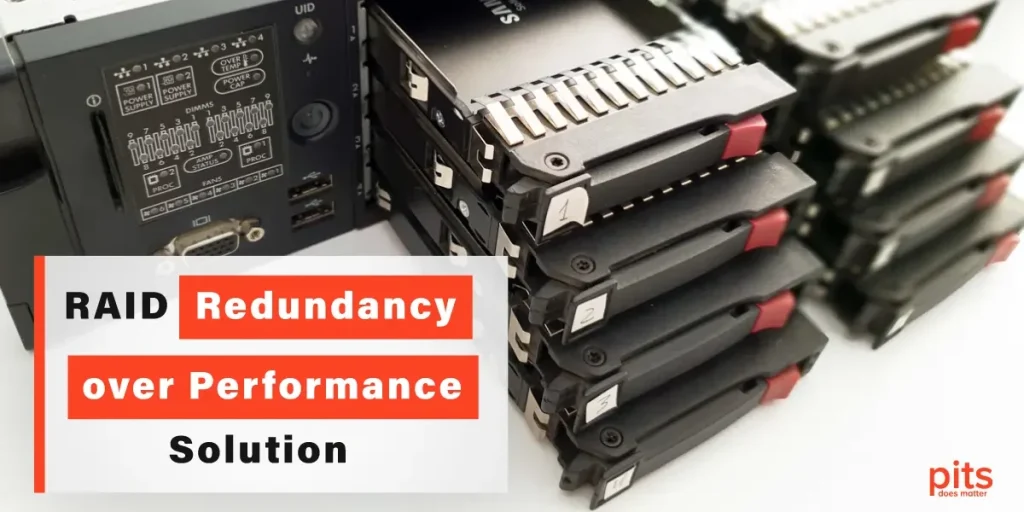RAID, an acronym for Redundant Array of Independent Disks, is a technology facilitating data storage across multiple hard drives. It offers advantages like enhanced performance, expanded storage capacity, and, notably, redundancy. This article will emphasise the significance of RAID redundancy over performance and guide you in selecting the appropriate RAID level to attain it.
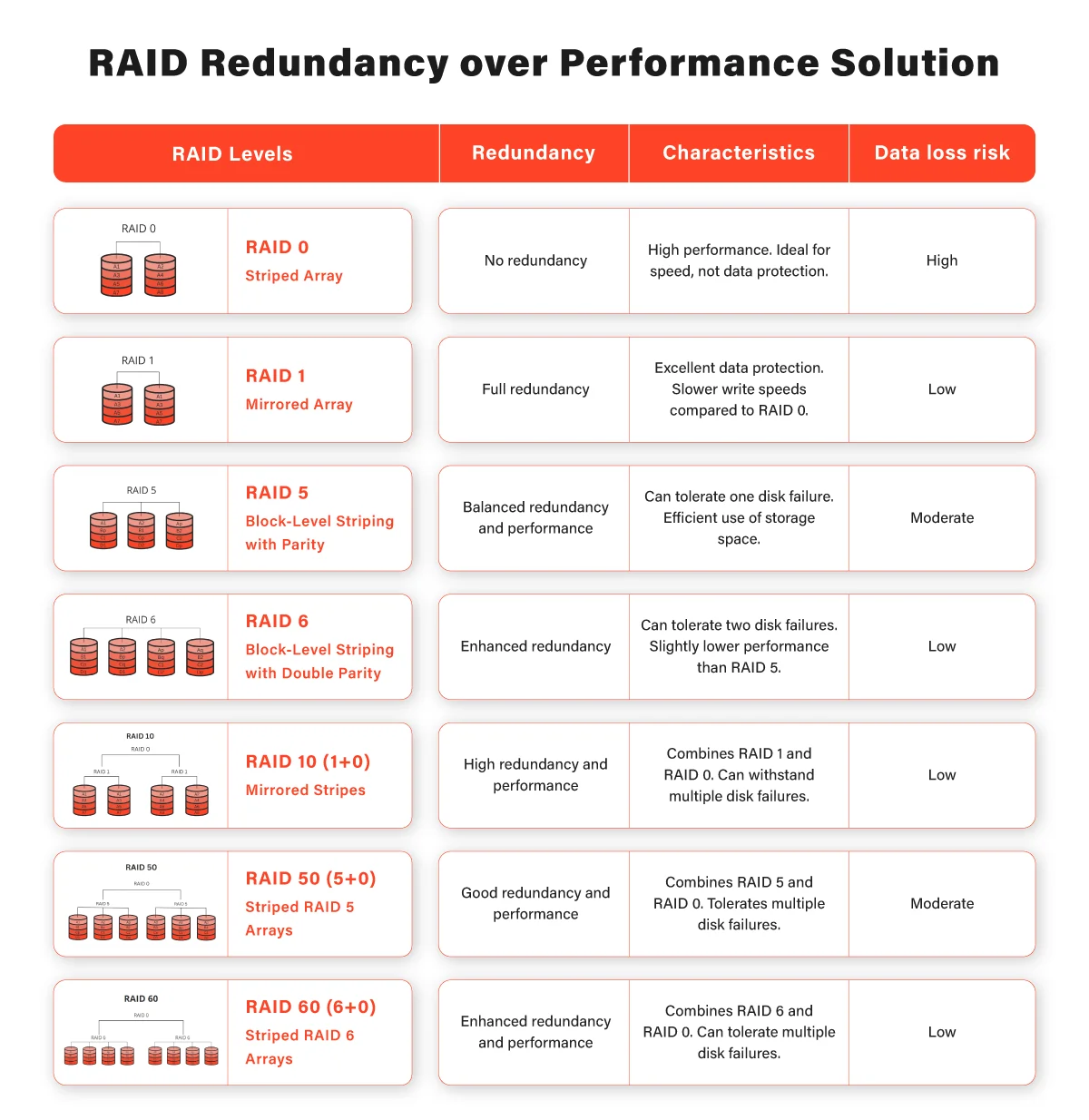
Defining Redundancy
Redundancy serves as a fail-safe mechanism, ensuring continuous data availability, even in the event of one or more hard drive failures. In RAID systems, redundancy is established by dispersing data across multiple disks, allowing for data reconstruction from surviving drives if one malfunctions. This is typically accomplished through techniques such as mirroring, parity, or a combination of both.
Mirroring entails the duplication of data across multiple hard drives. For instance, RAID 1 involves the simultaneous writing of data to two mirrored drives. In case of one drive failure, the other can be utilised for data reconstruction. Mirroring provides a straightforward and effective form of data redundancy, albeit it incurs the highest disk usage costs.
On the other hand, parity involves generating supplementary data that aids in data reconstruction following a disk failure. This additional data is computed using a mathematical algorithm and is stored on a separate drive.
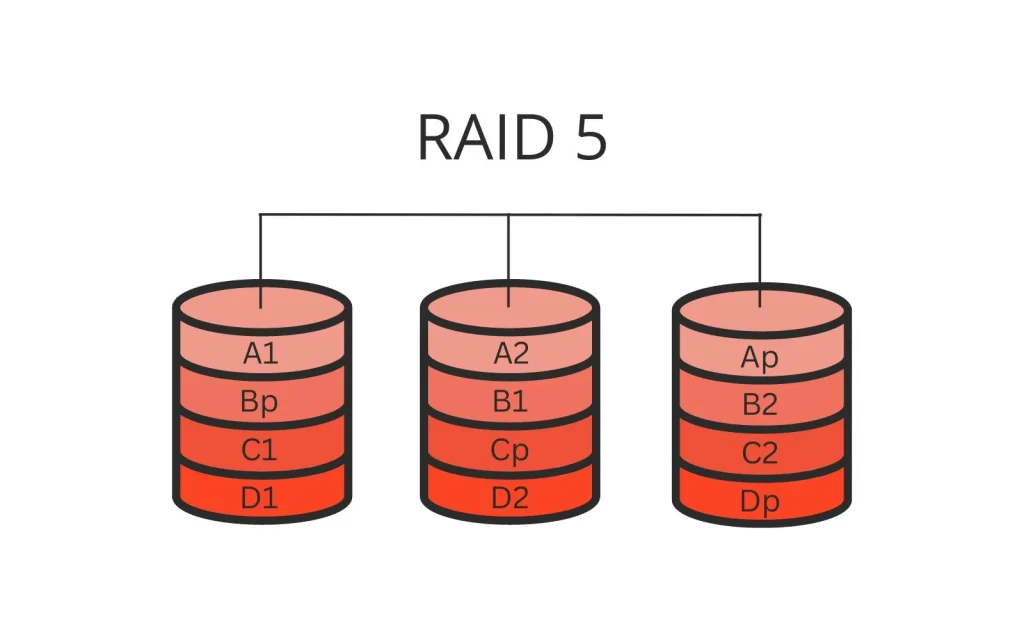
As an illustration, in RAID 5 configurations, data is distributed across three or more hard drives, with one drive exclusively allocated to parity. This design permits the failure of a single drive without compromising data integrity. RAID 6, a close counterpart to RAID 5 but with two parity drives, accommodates the failure of up to two drives while preserving data integrity. A fusion of mirroring and parity is applied in RAID 10, where data is striped across two sets of mirrored drives.
This setup offers a blend of redundancy and performance, allowing for the failure of one drive within each set without any data jeopardy. Redundancy is imperative for safeguarding data against hardware failures arising from diverse factors, including physical harm, wear and tear, or power fluctuations. The absence of redundancy can entail data loss or operational disruptions caused by a lone hard drive failure, incurring substantial costs and disturbances for businesses and individuals alike.
Furthermore, in addition to mitigating hardware failures, redundancy serves as a shield against alternative data loss sources, encompassing human errors, software glitches, or natural calamities. For instance, in cases of inadvertent file deletion, redundancy permits retrieval from a duplicate copy. Likewise, in the event of software-related file corruption, recovery is attainable. Even if a flood or fire affects one set of hard drives, data restoration remains feasible from alternative drives.
The Interplay of Redundancy and Performance in Data Storage
In data storage systems, redundancy and performance are intertwined when multiple copies of data are dispersed across various storage devices. Redundancy serves as a safeguard against data loss during hardware failures, permitting data reconstruction from the retained copies on other storage devices.
Nevertheless, the pursuit of redundancy can affect the system’s performance as data must be simultaneously written to multiple storage devices, a process more time-consuming than writing to a single device. The extent of performance impact hinges on the level of redundancy deployed. While redundancy may entail some performance trade-offs, the advantages of data security and accessibility often outweigh the minor performance dip.
Technological advancements have, over time, mitigated the performance impact of redundancy, rendering it a more feasible option for diverse applications. When selecting a data storage system, it is crucial to deliberate the balance between redundancy and performance and opt for the system that aligns with specific requirements.
Redundancy-Focused RAID Configurations
RAID 1 – Data Mirroring
RAID 1 represents the most straightforward redundancy-oriented RAID configuration. It entails the mirroring of two hard drives, ensuring simultaneous data writes to both. In the event of one drive’s failure, the other serves as a means to reconstruct the data. RAID 1 is an apt choice for compact systems prioritising data availability over high performance.
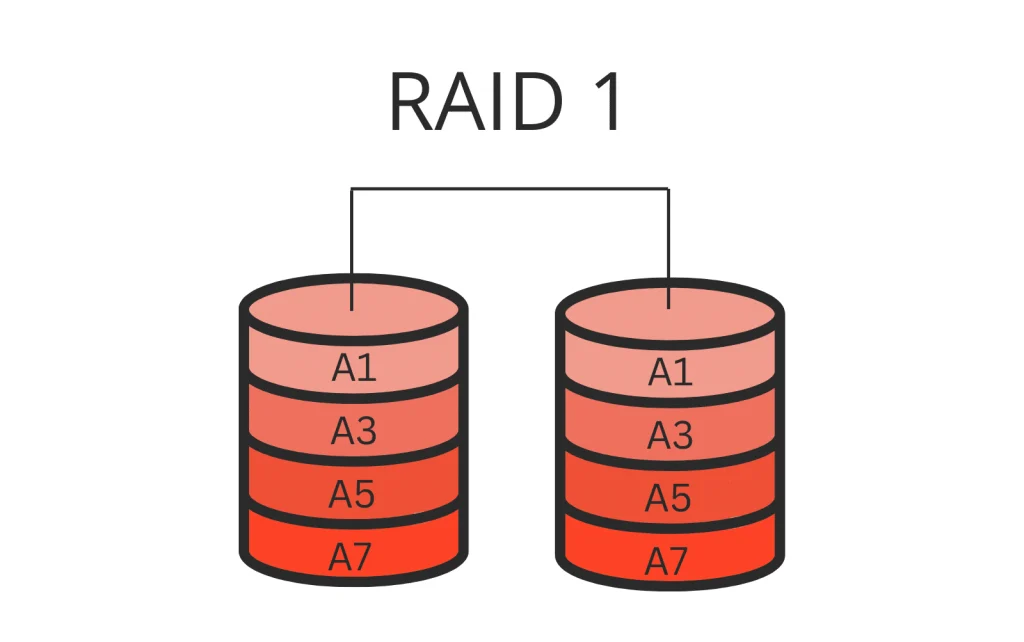
RAID 5 – Data Striping with Parity
RAID 5, a widely adopted RAID level, strikes a balance between performance and redundancy. Data is striped across three or more hard drives, with one drive exclusively reserved for parity data.
In the event of a disk failure, parity data plays a pivotal role in data reconstruction. RAID 5 delivers commendable read/write speeds, making it suitable for systems demanding both robust data availability and performance.
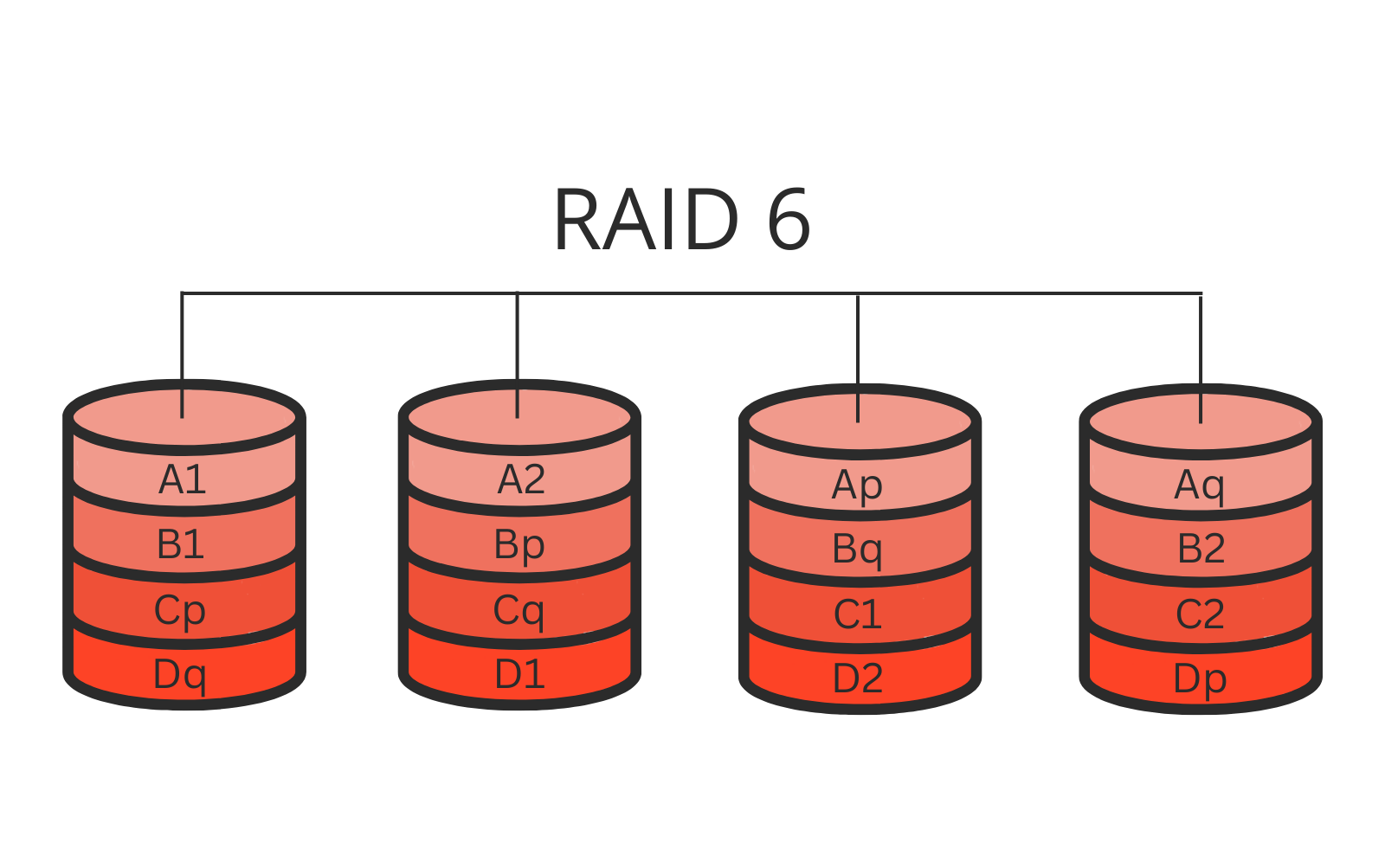
RAID 6 – Data Striping with Dual Parity
RAID 6 mirrors the RAID 5 setup but incorporates an additional parity drive. This augmentation enhances redundancy, permitting the failure of up to two drives without data loss. RAID 6 suits larger systems requiring substantial data availability, capable of accommodating the marginal performance trade-offs associated with redundancy.
RAID 10 – Enhanced Redundant Striping
RAID 10 marries RAID 1’s redundancy with RAID 0’s performance by stripping data across two sets of mirrored drives. It offers impressive read/write performance along with fault tolerance, making it well-suited for expansive systems demanding both robust data availability and high performance.
To summarise, RAID redundancy plays a pivotal role in safeguarding data against hardware failures. While RAID configurations emphasising performance might be apt for specific applications, it’s crucial to assess your data protection requirements and select a RAID setup that aligns with the desired level of redundancy. For those prioritising RAID solutions for redundancy over performance, the options to consider include RAID 1, RAID 6, and RAID 10.
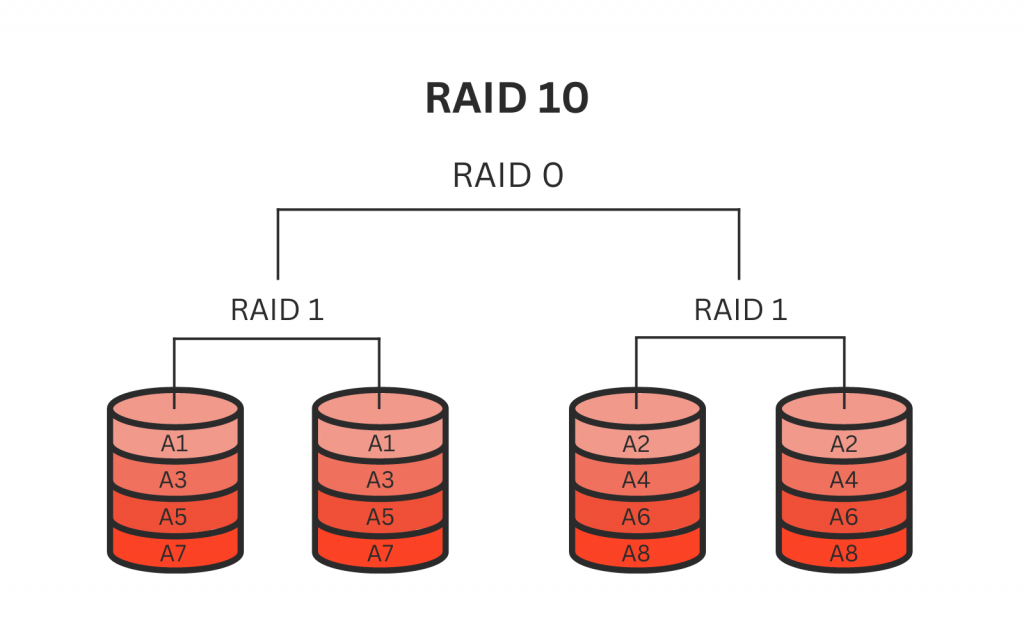
The choice of the most suitable RAID level for your system hinges on factors such as system size complexity, as well as your performance and redundancy prerequisites. It is crucial to note that RAIDs should not be viewed as a substitute for data backups. While RAID redundancy safeguards against hardware failures, it does not shield against alternative data loss causes like human errors, software glitches, or natural disasters. A comprehensive backup strategy is essential to ensure data recovery in case of any data loss incidents.
RAID redundancy plays a vital role in defending data against hardware failures. Despite a marginal performance trade-off, the advantages of data protection greatly outweigh this aspect.
PITS specialises in comprehensive RAID data recovery services. Whether you encounter data loss in any RAID configuration, our highly skilled technicians possess the expertise to recover your critical data. We understand the urgency and complexity of RAID failures and employ advanced techniques and cutting-edge technology to swiftly and securely restore your data.
With a proven track record of successful RAID recoveries, PITS Data Recovery stands as your trusted partner for retrieving valuable information from RAID arrays, reducing downtime, and ensuring business continuity.
Frequently Asked Questions
What Does RAID Redundancy Over Performance Mean?
RAID redundancy over performance denotes a setup that prioritises data redundancy and fault tolerance above achieving peak performance. It entails amalgamating multiple hard drives to establish a logical volume that guarantees data integrity and accessibility, even in the event of drive failure.
Which RAID Levels Suit Redundancy Over Performance?
RAID 1 (mirroring) and RAID 5 (striping with distributed parity) are commonly employed for redundancy over performance. RAID 1 creates an identical data copy (mirror) across multiple drives, while RAID 5 disperses data and parity details across drives. Both RAID levels facilitate data reconstruction in the event of drive failure.
What Are the Advantages of RAID Redundancy Over Performance?
RAID redundancy’s benefits encompass data protection, fault tolerance, and swift data recovery. It shields data against drive failures, guarantees uninterrupted operation during failures, and facilitates relatively rapid data recovery by reconstructing lost data from surviving drives.
Is RAID Redundancy Suitable for All Scenarios?
RAID redundancy is not essential for every situation. If maximised performance or cost-effectiveness takes precedence over data redundancy, alternative RAID configurations tailored for speed or storage capacity may be more appropriate. It is vital to assess the particular demands and prerequisites of your data storage environment before opting for a RAID configuration.
